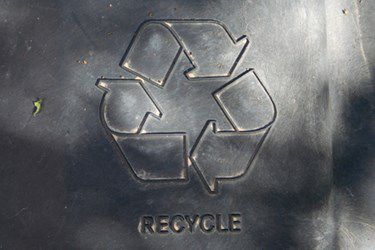Convincing The Public Of Potable Reuse
Published on by Naizam (Nai) Jaffer, Municipal Operations Manager (Water, Wastewater, Stormwater, Roads, & Parks) in Academic
The general public has a long history of fearing what it does not understand. The unknown threatens our perception of the world, it threatens our security, and maybe on some level it threatens our very existence as we understand it.
This could explain the animosity aimed at potable reuse, the practice of introducing recycled water directly into a public water system or blending recycled water into a natural source upstream from the treatment plant. Ask a sensible water professional and they will explain that recycled drinking water is as clean, if not cleaner, than what’s currently coming out of the tap.
And yet, a stigma persists. Last year, University of Pennsylvania psychologist Paul Rozin found that of 2,000 consumers surveyed, only 49 percent were willing to drink recycled water.
While there is evidence to indicate that the public is coming around on recycled water, the “toilet-to-tap” moniker has persisted. It’s on water utilities to change that.
To bring this call to action to water agencies along with actionable steps for them to pursue, the WateReuse Association, a nonprofit trade group, hosted a potable reuse communications webcast last month with one of its state sections, WateReuse California.
Jennifer West, managing director of WateReuse California, believes that activity in her state makes this the perfect time to laud the benefits of potable reuse and change the national perception.
“California is experiencing a major uptick in interest in potable reuse and other communities across the country and around the world are watching closely,” she said. “With this intense activity in California and increasing interest from our members in general, the need for the workshop was clear.”
For years, the research branch of the WateReuse Association has been looking into the best ways to communicate the value of potable reuse, developing videos, graphics, and other tools that can help public outreach. The webcast was an opportunity to share those tools.
“Some of the key steps include developing coordinated and consistent messaging; creating communication and outreach tools such as literature, websites, speaker’s bureaus, and visitors’ centers; building trust in water quality; identifying opinion leaders; and developing a rapid response plan,” explained West. “Getting the messages right is essential.”
The WateReuse Research Foundation has found that three facts about potable reuse play particularly well with the public and should be deployed by water agencies accordingly:
- Potable reuse provides a safe, reliable, and sustainable drinking water supply.
- Using advanced purified water is good for the environment .
- Potable reuse provides a locally controlled, drought-proof water supply .
“Experience has shown that public acceptance of potable reuse is one of the primary challenges facing the use of this source of water supply,” said West. “Just as processes leading to potable reuse involve the use of a proven and reliable technology to purify recycled water, there is a set of proven processes that can help an agency develop a plan. A successful plan will ensure that a utility is well prepared when introducing potable reuse to the community and avoid pitfalls that can lead to concerns about the project.”
The group recommends reaching out to other communities that have conducted successful outreach campaigns. Its website hosts tools like the Global Connections Map which identifies existing potable reuse projects, videos that illustrate treatment processes, model communication plans, and several research studies on messaging and terminology.
It’s possible that concerted communications efforts from utilities will combine with an increasing need for alternative sources of clean water, making them all the more effective. West has seen a rise in acceptance for potable reuse as a natural result of water stress, pointing to a groundwater recharge venture in Florida and public support for reuse projects in Texas as examples.
“With the backdrop of drought, the public has been open to learning about the proven and tested technology that allows us to treat virtually any source water to a level appropriate for any purpose, including drinking,” she said. “The attitudes vary depending on the local community, but the good news is that there are excellent examples of what works that can be used to build a successful communications plan. The research clearly indicates that a more informed public is a more accepting public.”
With the proper outreach, fears about potable reuse could give way to the knowledge that it’s our best chance for the future.
Attached link
http://www.wateronline.com/doc/convincing-the-public-of-potable-reuse-0001Taxonomy
- Potable
- Water Reuse & Recycling
- Reuse